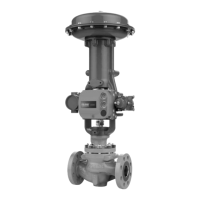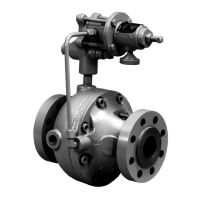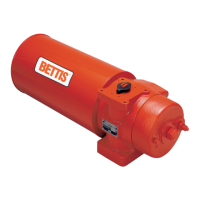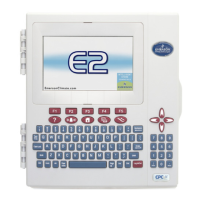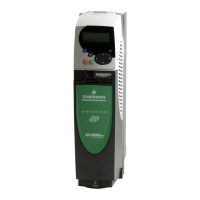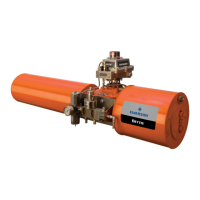Introduction
Parameter
x.00
Parameter
description format
Keypad and
display
Serial
communications
CT Modbus
RTU
PLC Ladder
programming
CTSoft Menu 0
Advanced parameter
descriptions
Menu 4
Commander SK Advanced User Guide 65
Issue Number: 9 www.controltechniques.com
The active current is the torque producing current in a motor drive.
The diagram above shows the magnetising and active current vectors. These are represented in x and y axes of a reference frame. Pr 4.02 gives the
active current which is proportional to the length of the vector in the y axis and equivalent to the active phase current value in amps.
If the drive operates with fixed boost the y axis is aligned with the output voltage. Therefore the magnetising current represents the reactive
component of current leaving the drive and the active current represents the real component of current leaving the drive. Therefore the active current
produces torque and supplies the losses in the motor.
If the drive operates in vector mode (see Pr 5.14 on page 79) the x axis is aligned with the stator flux in the steady state, and so the active current
should be proportional to the torque produced by the machine. The active current will give a good indication of the machine torque over most of the
frequency range, however, the accuracy is reduced below 10Hz.
In both cases the relationship between the active current and motor torque will change once the maximum drive output voltage or the rated voltage of
the motor set by Pr 5.09 is reached, whichever is the lowest. (Generally the maximum drive output voltage will be just below the r.m.s. line supply
voltage.) Once one of these limits is reached the voltage is held constant and the motor flux reduces with frequency. This is referred to as field
weakening or constant power operation. In this region the relationship between torque and active current is approximately as follows, where K is a
constant related to the motor:
Torque = K x active current x frequency at voltage limit / actual frequency
Normally the point at which the voltage limit is reached is close to the rated frequency of the motor.
The current demand is derived from the torque demand. If torque control mode is selected (Pr 4.11=On) this becomes the active current demand for
the drive. The current demand is shown as a percentage of the rated active current, which is defined by the user set-up of the drive. Provided the
motor is not field weakened, the torque and current demands are the same. In field weakening, the current demand is increased with reduced flux.
The current demand is subject to the current limits.
4.02 Motor active current {89}
Coding
Bit SP FI DE Txt VM DP ND RA NC NV PT US RW BU PS
1 121 1 1
Range ±DRIVE_CURRENT_MAX A
Update rate Background
Direction of active current Direction of rotation State and direction of rotation Torque
+ + Forward accelerating Motoring (+)
- + Forward decelerating or braking Regeneration (-)
+ - Reverse decelerating or braking Regeneration (-)
- - Reverse accelerating Motoring (+)
4.03 Unused parameter
4.04 Current demand
Coding
Bit SP FI DE Txt VM DP ND RA NC NV PT US RW BU PS
1 111 1 1
Range ±TORQUE_PROD_CURRENT_MAX %
Update rate Background
4.05 to 4.06 Unused parameters
4.07 Symmetrical current limit
Coding
Bit SP FI DE Txt VM DP ND RA NC NV PT US RW BU PS
11 1 111
Range 0 to MOTOR1_CURRENT_LIMIT_MAX %
Default 165.0
Second motor
parameter
Pr 21.29
Update rate Background
Current demand
Pr4.08 M× otor frequency (Pr 5.01)
Rated frequency (Pr 5.06)
---------------------------------------------------------------------------------------------------
=
MOTOR1_CURRENT_LIMIT_MAX
Maximum current
Motor rated current
-------------------------------------------------------
2
PF()
2
1–+
PF
--------------------------------------------------------------------------------------------------------
100%×=

